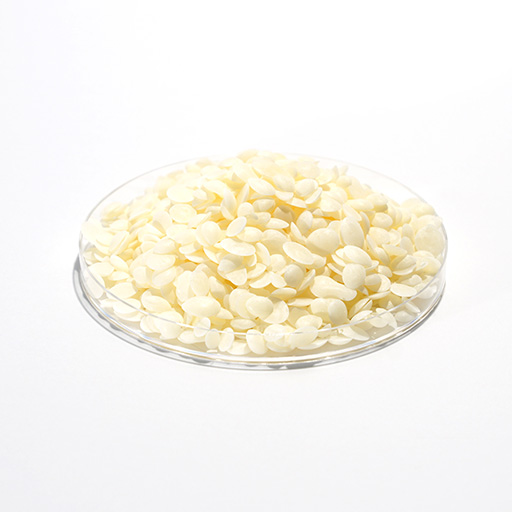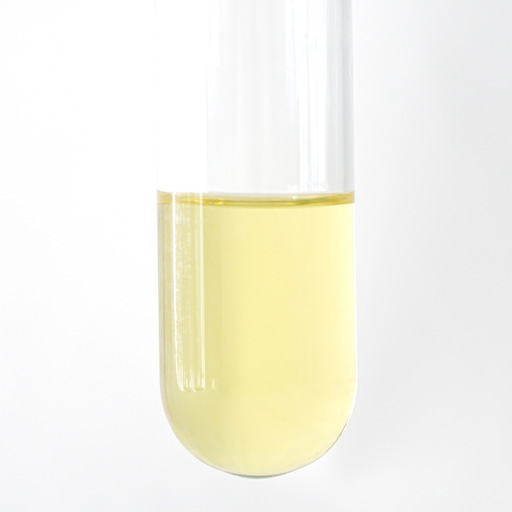
Japan wax
Field of use
Japanese traditional culture
Since ancient times, it has been used in Japanese candles, as a hair oil for sumo wrestlers, and for polishing silk fabrics for clothing.
Cosmetics field
Currently, it is widely used as a raw material for cosmetics such as lipsticks, eyebrow ink, creams, pomades, and cosmetics, and demand is increasing. We are also developing a new product, a feel improver using Japan wax powder.
others
It is also used in pharmaceuticals (pouches, ointments), stationery (colored pencils, crayons, pastels, etc.), CERARICA coatings, food mold release agents, soaps, etc. In the future, it is also expected to be used in the medical field.
Features of Japan wax
Our Japan wax has three main characteristics.
viscosity
It has the property of giving cosmetics stickiness and maintaining appropriate hardness.
transparency
In pomade, castor oil is solidified with Japan wax and turned into a gel. It also has the property of keeping the gel transparent.
Glossiness
The crystals of Japan wax are dense and give the product a glossy shine.
Our Japan wax purification technology
Using our unique purification method (patented) jointly developed with RIKEN, we have succeeded in completely removing the unique odor and peroxides of Japan wax without impairing its original characteristics. Japan wax refined by our company has excellent touchability on human skin and is used in a variety of products in the cosmetics field. In addition, by using our Japan wax as a raw material, you can obtain the pure fragrance of the fragrance itself, improving product value and reducing costs.
Japan wax production area and growing environment
Japan wax is a natural plant-based wax produced in Japan that is obtained from the nuts of the goby tree, which grows naturally in the Kyushu, Shikoku, and Chugoku regions. In recent years, an increasing number of haze trees have been left unharvested, and the lack of harvesters has become a serious problem. For the past four years, our company has been holding ``Haze no Mi School'', a seminar on how to harvest Haze no Mi, all over Kyushu, teaching safe and efficient harvesting methods, and nurturing new harvesters. In cooperation with Minamata City, which aims to become an SDGs future city, we are also promoting future-building activities, from planting and harvesting haze trees to creating new products.
Origin of raw materials (about goby)
Japan wax is a plant-based wax that is unique to Japan and is obtained from the nuts of the goby tree, which grows wild mainly in the Kyushu, Shikoku, Chugoku, and Wakayama prefectures. Haze is a deciduous tree belonging to the sumac family, and is also known for its beautiful autumn leaves. Small yellow and white flowers bloom from May to June. (The goby flowers are used as a high-grade honey.) After that, small green fruits appear. The fruit gradually matures and turns yellow, and is harvested from early November to February of the following year. The wax is contained in the fibers of the pulp, which is surrounded by a thin outer skin.
Japan wax supports Japanese tradition
The branches of the goby tree are dyed using advanced vegetable dyeing techniques. This method of dyeing is used for the formal attire of His Majesty the Emperor when he ascends the throne. The smooth hair of Her Majesty the Empress is also hardened with Japan wax extracted from the fruit. Furthermore, the large ginkgo used by sumo wrestlers, the national sport, is made from Japan wax . Furthermore, the core material of Japanese bows, which are also used in Shinto rituals, is made from the trunk of the haze tree. Haze Japan wax is truly Japan's representative "Japan wax".
History of Japan wax , the beginning of our company
The haze tree originally grew wild in warm regions of Asia, including Japan, but it is estimated that it began to be cultivated about 700 years ago. The "Taiho Ritsuryo Code" enacted in the early 8th century contained provisions regarding the encouragement of the cultivation of sumac trees, and it is said that wax was probably extracted from sumac berries. Japan wax began to be cultivated and produced in earnest in the Edo period, when the demand for candles, bottled candles, powders, and other products increased. At that time, each domain competed to improve the breed of hazenoki. Furthermore, during the Tenpo Famine, many clans encouraged the production of Japan wax as a means of rebuilding the clan's finances and providing relief to the poor, as it provided cash income from outside the clan. Our company, CERARICA NODA, began when Tsunetaro, the 8th generation of the Noda family, who received orders from the Arima domain in Kyushu (present-day Kurume City and Yame City areas), established Noda Wax. After that, production of Japan wax reached its peak during the Meiji period, but immediately after the end of the war, oils and fats could not be imported due to a lack of foreign currency, and domestically produced Japan wax became highly prized as a valuable item.
Wood wax product series list
| product series | Product name | shape |
|---|---|---|
| Futuristic products (functionality/culture) | Royal wax G | pellet |
| Royal wax W | pellet | |
| Japanese candle (handmade/cut out) | Craft | |
| Highly deodorized Japan wax powder | true sphere powder | |
| F series (Pesticide free/Safe and secure) | NC-1250F | pellet |
| NC series (high precision products) | - | - |
| Standard refined products | Japan wax -100 | pellet |
| Japan wax -100S | pellet | |
| Deodorized purified white wax | pellet | |
| SJ-CY (synthetic wood wax) | pellet | |
| Cost-oriented products | Industrial Japan wax (small plate) | pellet |
| Industrial Japan wax (large plate) | pellet | |
| Raw wax (underlay) | pellet | |
| Specially selected white wax | pellet | |
| Treasure white wax | pellet |
Wood wax product performance comparison table
| futuristic products | Standard | ||
|---|---|---|---|
| product name | Highly deodorized Japan wax true sphere powder | Japan wax -100 | Deodorized purified white wax |
| shape | powder | pellet | pellet |
 |  |  | |
| Transparency after dissolution |  |  | |
| explanation | In response to requests for changing the raw materials for products from fossil raw materials to natural products, we have created CERARICA natural powder series with a variety of textures and particle sizes. | 100% purified Japan wax that has been bleached and deodorized. | 100% purified Japan wax that has been exposed to the sun and deodorized. |
| composition |  |  |  |
| acid value | 15~30 | < 30 | 15~30 |
| saponification value | 205~225 | 205~225 | 205~225 |
| Iodine value | 5~18 | 5~18 | 5〜18 |
| Melting point (℃) | 50~53.5 | 50~53.5 | 50~53.5 |
| peroxide value | < 20 | - | < 20 |
| Heavy metals (ppm) | < 20 | < 20 | < 20 |
| Arsenic (ppm) | < 2 | < 2 | < 2 |
| specific gravity | 0.98(25℃) | 0.978(25℃) | 0.98(25℃) |
| Penetration (100g/5s) | - | 30(25℃) | - |
| Viscosity (cP) | - | 13.8 (100℃) | - |
| Flash point (℃) | 242 | 242 | 242 |


